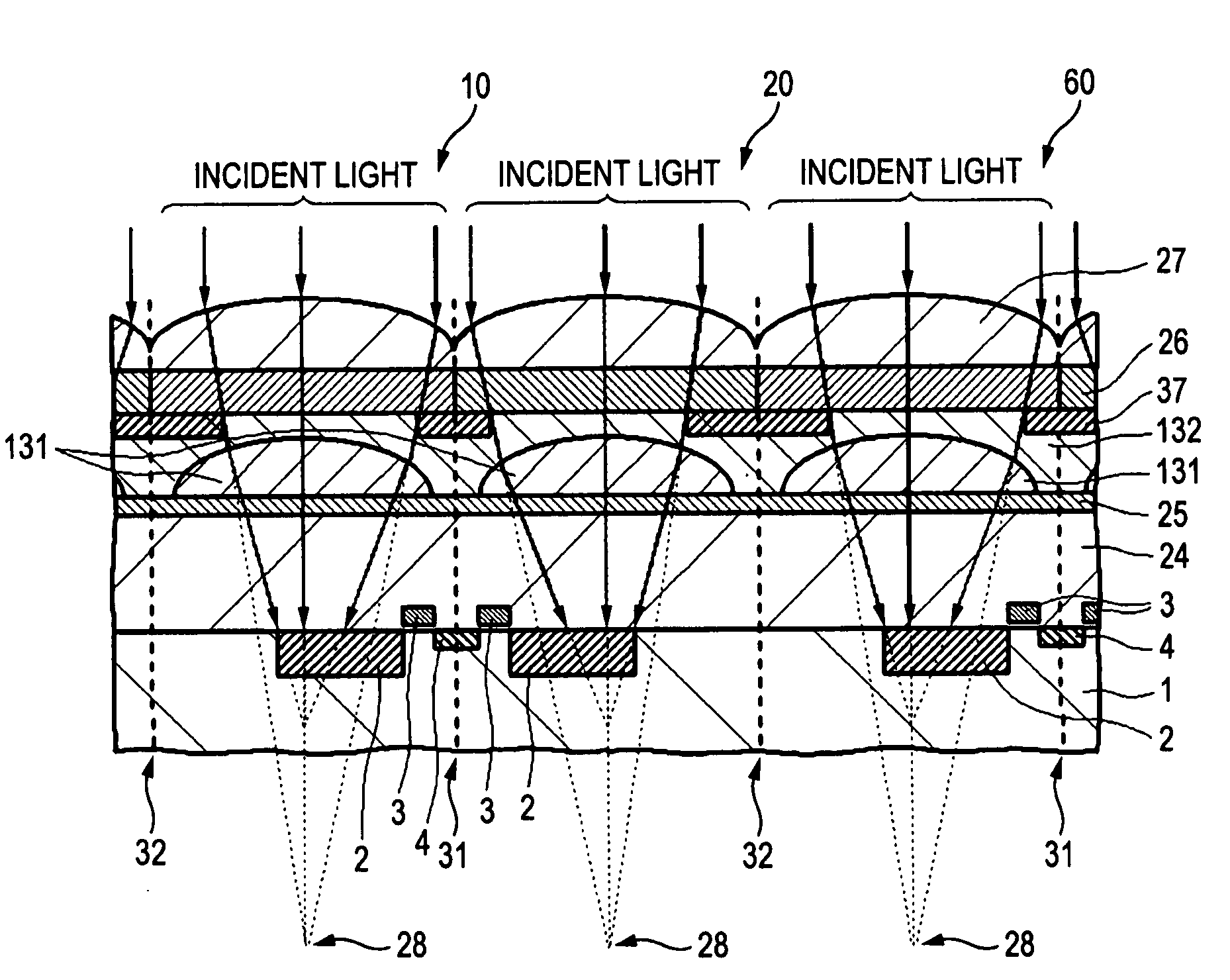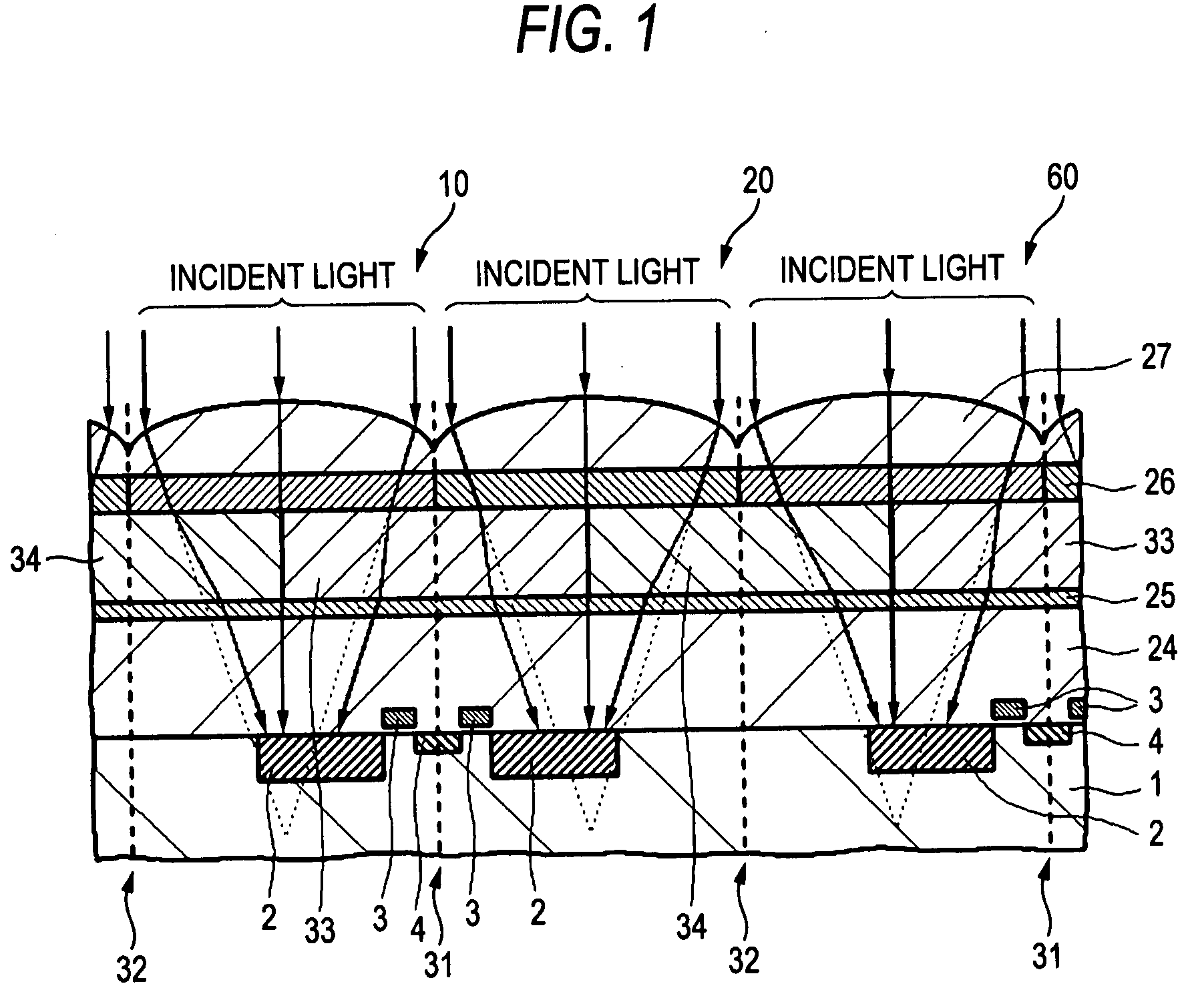Solid-state imaging device and imaging apparatus
a solid-state imaging and imaging apparatus technology, applied in the field of solid-state imaging devices, can solve the problems of reducing the light collection amount at the photodiodes, deteriorating image quality, and reducing the light-receiving area in each unit pixel, so as to reduce the number of transistors and wiring
- Summary
- Abstract
- Description
- Claims
- Application Information
AI Technical Summary
Benefits of technology
Problems solved by technology
Method used
Image
Examples
embodiment 1
[0068]In Embodiment 1, as an example of the solid-state imaging device of the invention, a CMOS image sensor will be explained. In the CMOS image sensor, an FD (floating diffusion) region common to two or four unit areas (hereinafter, referred to as unit pixels) is provided as an output extraction region which is common to the plural photoelectric conversion regions, and an amplifying transistor, a vertical selecting transistor and a reset transistor are shared between these unit pixels, thereby reducing the number of transistors at each unit pixel to sufficiently secure the light receiving area of the photodiode.
[0069]As a result of the above, it is inevitable that the photoelectric conversion region is provided being deviated from the central position of each unit pixel. In order to respond to this, in Embodiment 1, a high refractive index material layer is arranged over the deviated photoelectric conversion regions as well as a low refractive index material layer is arranged over...
embodiment 2
[0089]In Embodiment 2, as an example of the solid-state imaging device of the invention, a CMOS image sensor will be explained.
[0090]In the CMOS image sensor, as same as Embodiment 1, the FD region which is common to two or four unit areas (hereinafter, referred to as unit pixels) is provided as the output extraction region common to the plural photoelectric conversion regions, and the amplifying transistor, the vertical selecting transistor and the reset transistor are shared between the unit pixels, thereby decreasing the number of transistors at each unit pixel to sufficiently secure the light receiving area of photodiodes (refer to FIG. 2).
[0091]As a result, it is inevitable that the photoelectric conversion region is provided being deviated from the central position of each unit pixel. In order to respond to this, in Embodiment 2, one or plural lenses are provided along light paths of incident light over the deviated photoelectric conversion regions, and at least one of them is...
embodiment 3
[0106]FIG. 5 is a block diagram showing a configuration of an imaging apparatus based on Embodiment 3 of the invention. The imaging apparatus includes, in addition to the CMOS image sensor described in Embodiment 1 or 2 as a solid-state imaging element (solid-state imaging device) 42, a lens 41, an imaging circuit unit 43 which performs imaging processing based on a control signal from an AE (auto exposure) calculation / control unit 45, a timing generator 47 which controls the timing of the solid-state imaging element 42 and the AE calculation / control unit 45, an integration 48 which analyses a signal outputted from the imaging circuit unit 43 and the control signal from the AE calculation / control unit 45, a signal processing unit 44 which processes the signal outputted from the imaging circuit unit 43 using a control signal generated in an AWB (auto white balance) calculation / control unit 46 based on the signal from the integration 48, a display unit 49 which displays the signal out...
PUM
 Login to View More
Login to View More Abstract
Description
Claims
Application Information
 Login to View More
Login to View More - R&D
- Intellectual Property
- Life Sciences
- Materials
- Tech Scout
- Unparalleled Data Quality
- Higher Quality Content
- 60% Fewer Hallucinations
Browse by: Latest US Patents, China's latest patents, Technical Efficacy Thesaurus, Application Domain, Technology Topic, Popular Technical Reports.
© 2025 PatSnap. All rights reserved.Legal|Privacy policy|Modern Slavery Act Transparency Statement|Sitemap|About US| Contact US: help@patsnap.com



